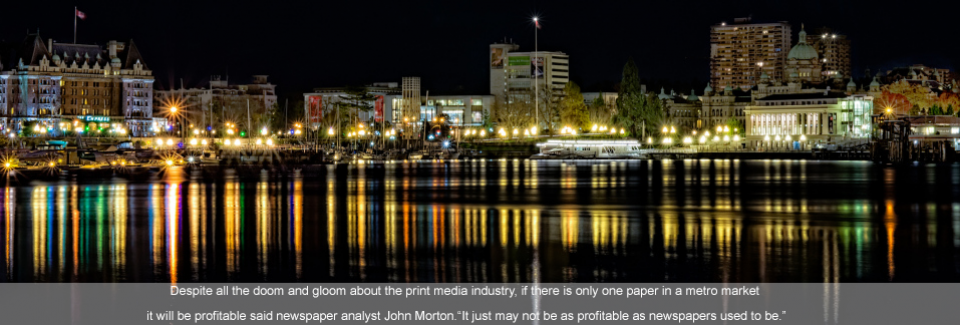American publishers and editors have only themselves to blame for failing to connect with the millennial generation that they—and most of their advertisers—covet the most.
The inability of newspapers to resonate with digital natives has left them with a daunting demographic challenge. Two-thirds of the audience at the typical newspaper is composed of people over the age of 55, according to Greg Harmon of Borrell Associates. “The newspaper audience ages another year every year,” he adds. “Everyone’s hair ought to be on fire.”
As the newspaper audience grays, the readers that newspapers and most of their advertisers would like to have are, instead, busily racking up page views at places like BuzzFeed, Circa, Mic, Upworthy, Vice, Vocative and Vox.
To delve into the demographic disparity, I pulled the audience data on mic.com, which comScore calls the favorite news destination for individuals between the ages of 18 and 34. Although many publishers and editors never may have heard of Mic, comScore reports that it is visited by a thumping 60 percent of millennials.
To make things interesting, I compared Mic’s audience with the aggregate data for the 28 geographically dispersed markets served by McClatchy Co., the largest newspaper company furnishing user data to quantcast.com, which requires publishers to opt in to its data service.
Quantcast indexes audiences against the national population to make it possible to compare the demographics of one website against another. This means a site whose audience perfectly mirrors the national age distribution would index at 100. Now, here’s how Mic compares with McClatchy, according to Quantcast’s data:
At Mic, users from 18 to 24 index at 156, meaning that the site has 1.5 times more readers in this age group than the national average. The index climbs to 171 for the 25-34 crowd.
The story is quite the opposite at McClatchy, where the under-34 age groups come in at less than 100 but where the incidence of older readers is above the norm, indexing at 108 for 35-44, 117 for 45-54, 126 for 55-64 and 125 for 65-plus.
Assuming McClatchy is representative of the industry—and I see no reason why it wouldn’t be— the big question is how so many highly intelligent and highly motivated newspaper executives failed to connect with this massive and influential market.
Here’s a not-so-subtle clue: In a recent study, researchers at the University of Missouri reported that only 29 percent of newspaper publishers conducted focus groups prior to putting paywalls around the digital products that most profess to be the future of their franchises.
Instead of talking to with their intended consumers, fully 85 percent of respondents to the survey said they asked other publishers what they thought about erecting barriers around the content that they had been freely providing for the better part of two decades.
While paywalls boosted revenues at most newspapers because they were accompanied by stiff increases in print subscription rates, the tactic gave the growing population of digital natives—and non-readers of every other age—the best reason yet for not engaging with newspapers.
Of course, newspapers were losing millennials well before they started feverishly erecting paywalls in the last few years. But what if publishers and editors had begun studying the needs and attitudes of the emerging generation from the early days of the millenium? Could the outcomes have been more positive?
In the interests of tuning into the thinking of those elusive 20-and 30-somethings, a newspaper client recently brought a panel of them to a strategy session. Here is what we learned:
- The millenials said the only media that matter to them are the social media, where they get current news about their friends, as well as cues to other interesting or relevant content.
- They put a great deal of trust in recommendations from their friends but are not motivated by loyalty to media brands.
- They will click on whatever content interests or amuses them, and they make no distinction among news, entertainment and advertising.
- They prefer graphic content—images, videos, GIFs, infographics, etc.—over text.
- They will buy a book, vinyl record or other physical artifact that they view as a collectible, but see no value in paying for access to ephemeral headlines that are freely available everywhere.
- They are turned off by the dispassionate voice that characterizes conventional media, preferring treatments that evoke an emotional response.
- They are smart, engaged and want juicy articles that take stands on important topics.
- They will exercise the full power of choice made possible by their always-on mobile devices.
- They are decisive. If they don’t like the content they are getting, they will make their own.
Given the above, it is easy to see that publishers and editors have a higher regard for their products than the next-gen consumers they need to attract. Now, the only question remaining is whether they have the gumption—and time—to turn things around.
Alan D. Mutter is a former newspaper editor and Silicon Valley CEO who today consults with media companies on technology and technology companies on the media. He blogs at Reflections of Newsosaur (newsosaur.blogspot.com).
– See more at: http://www.editorandpublisher.com/TopStories/Columns/Newsosaur–How-Newspapers-Lost-the-Millennials#sthash.uEbSPKlg.dpuf
